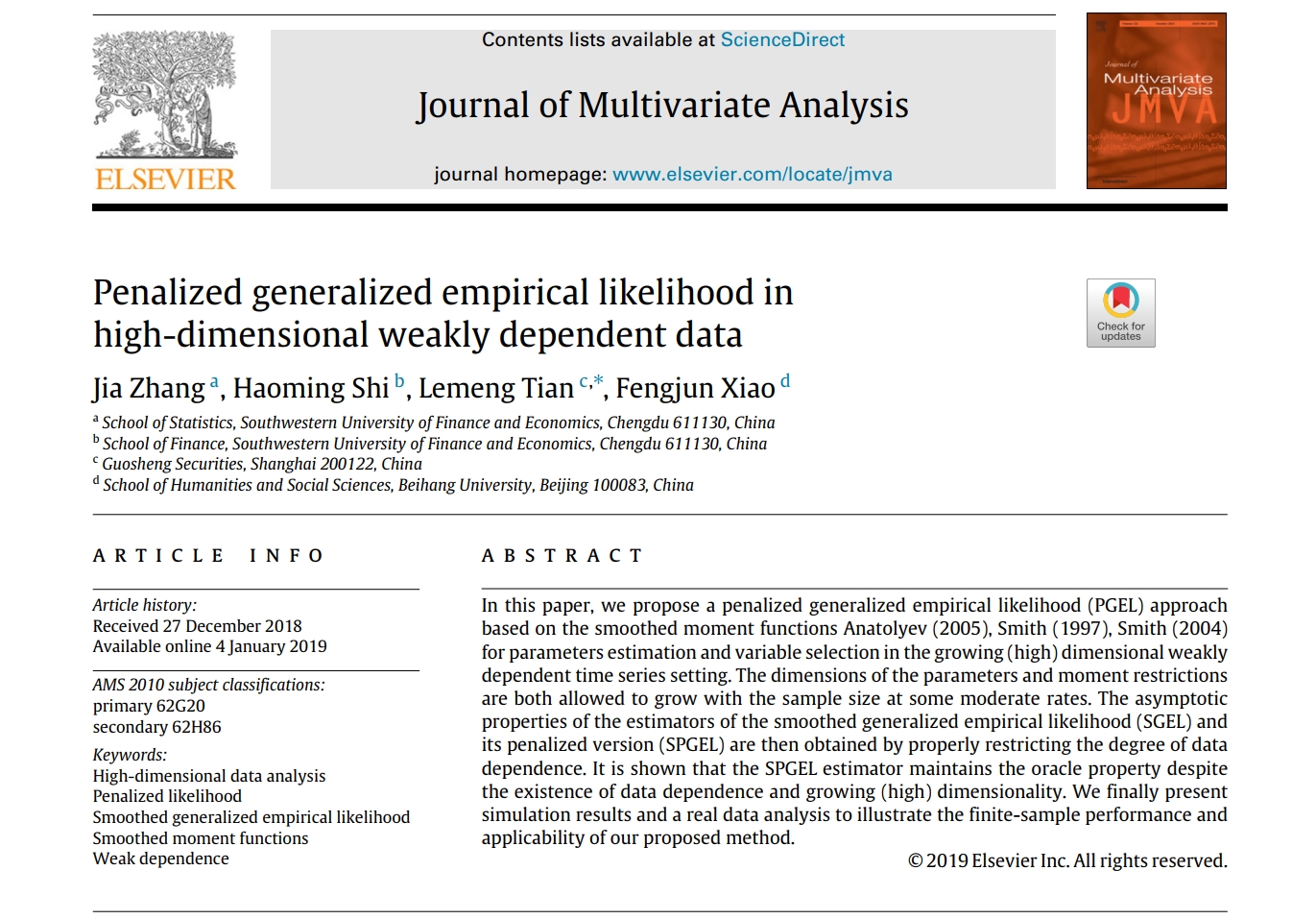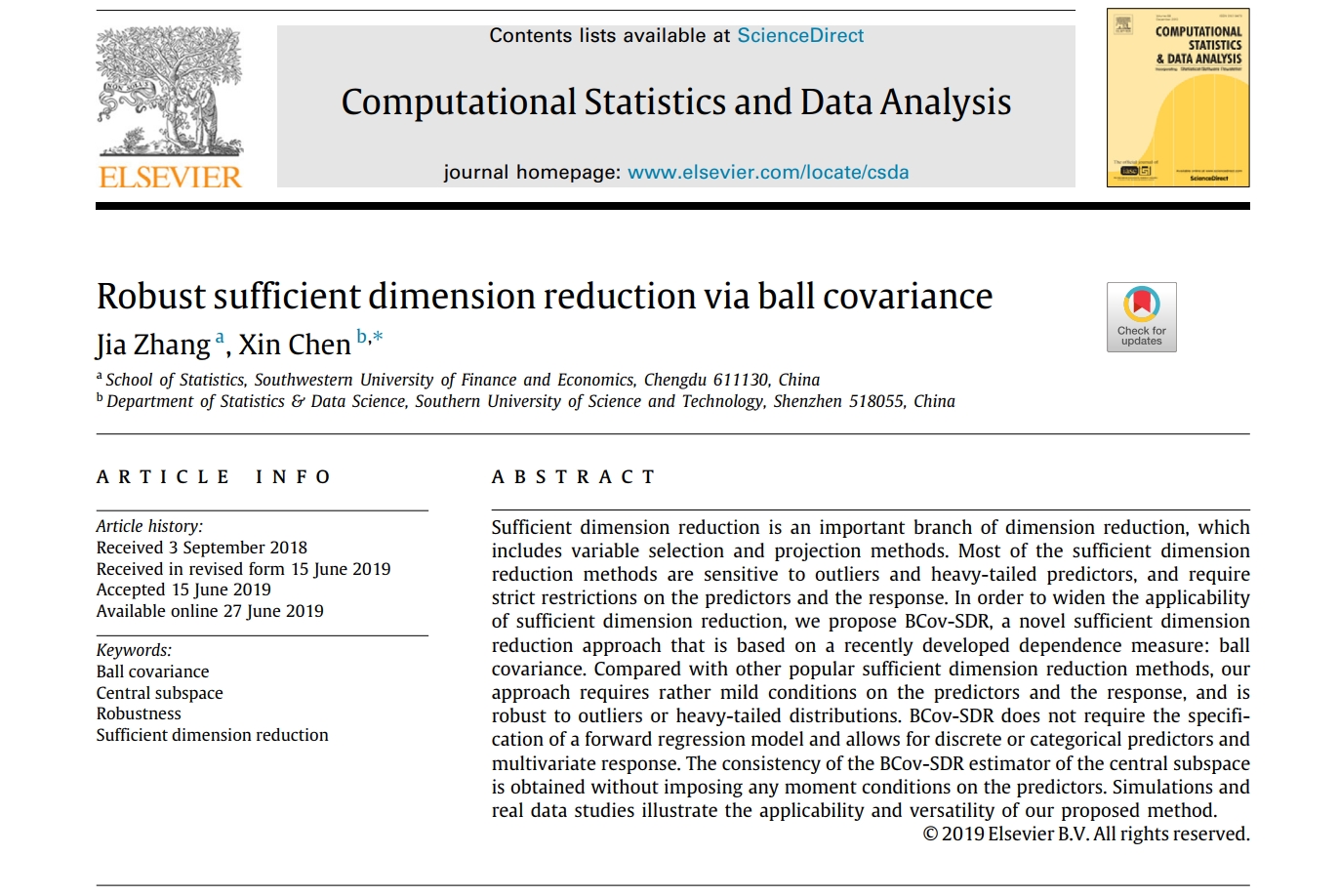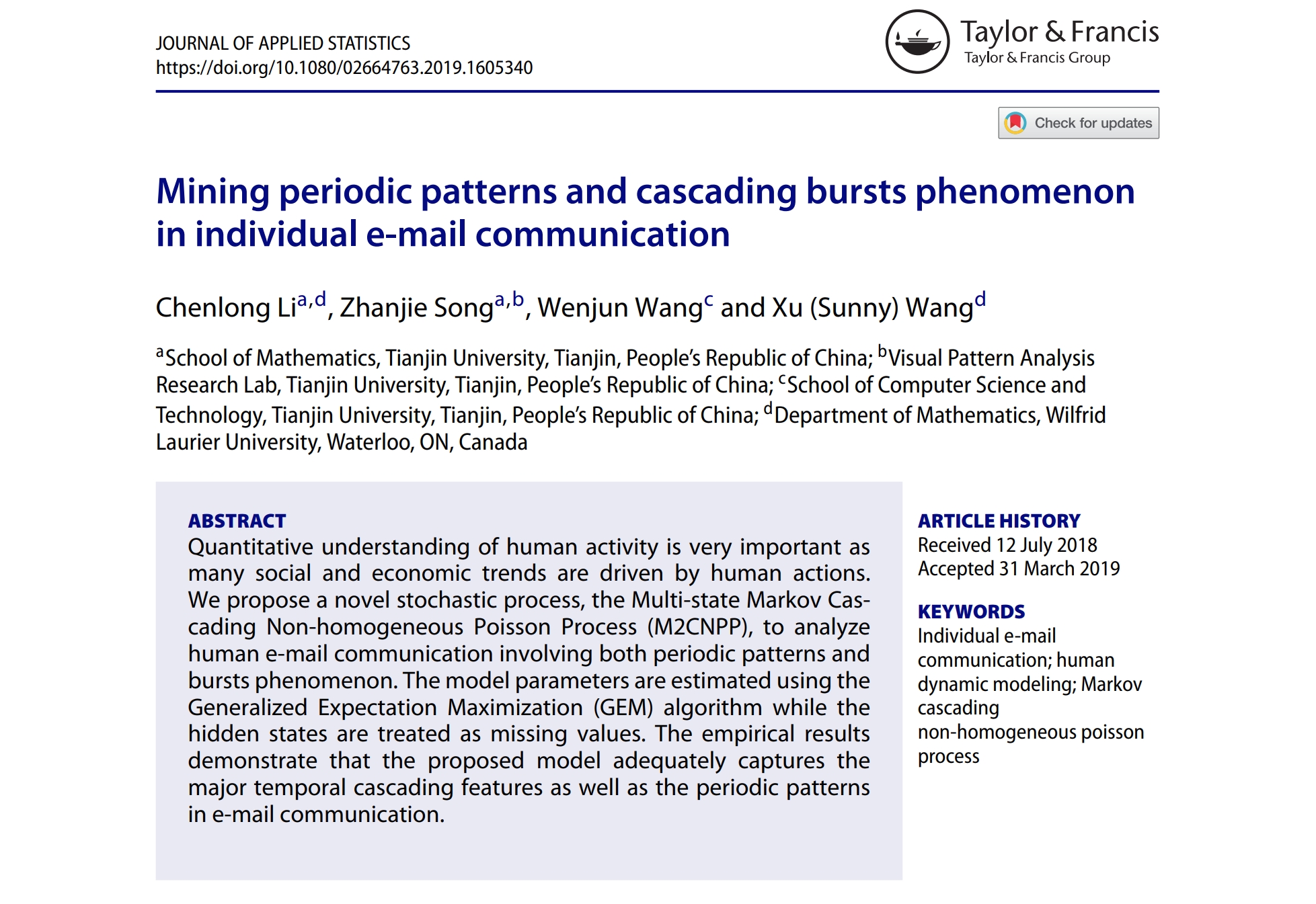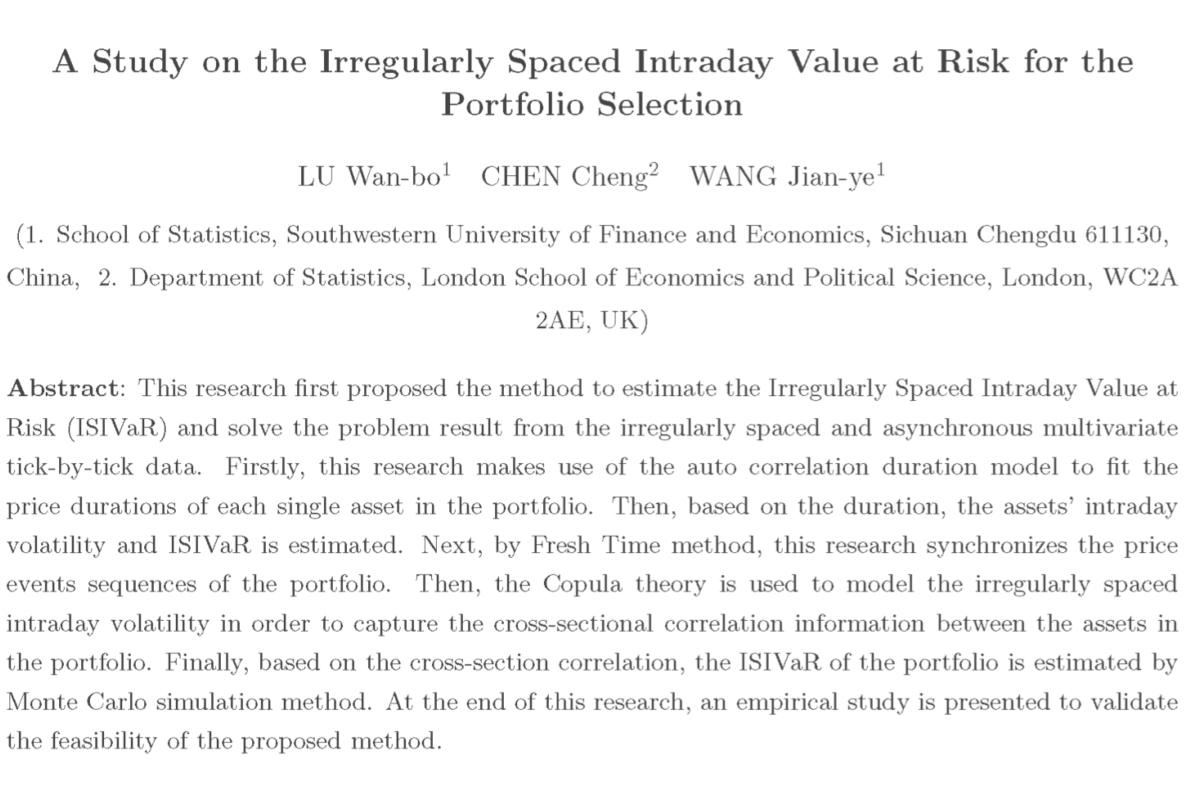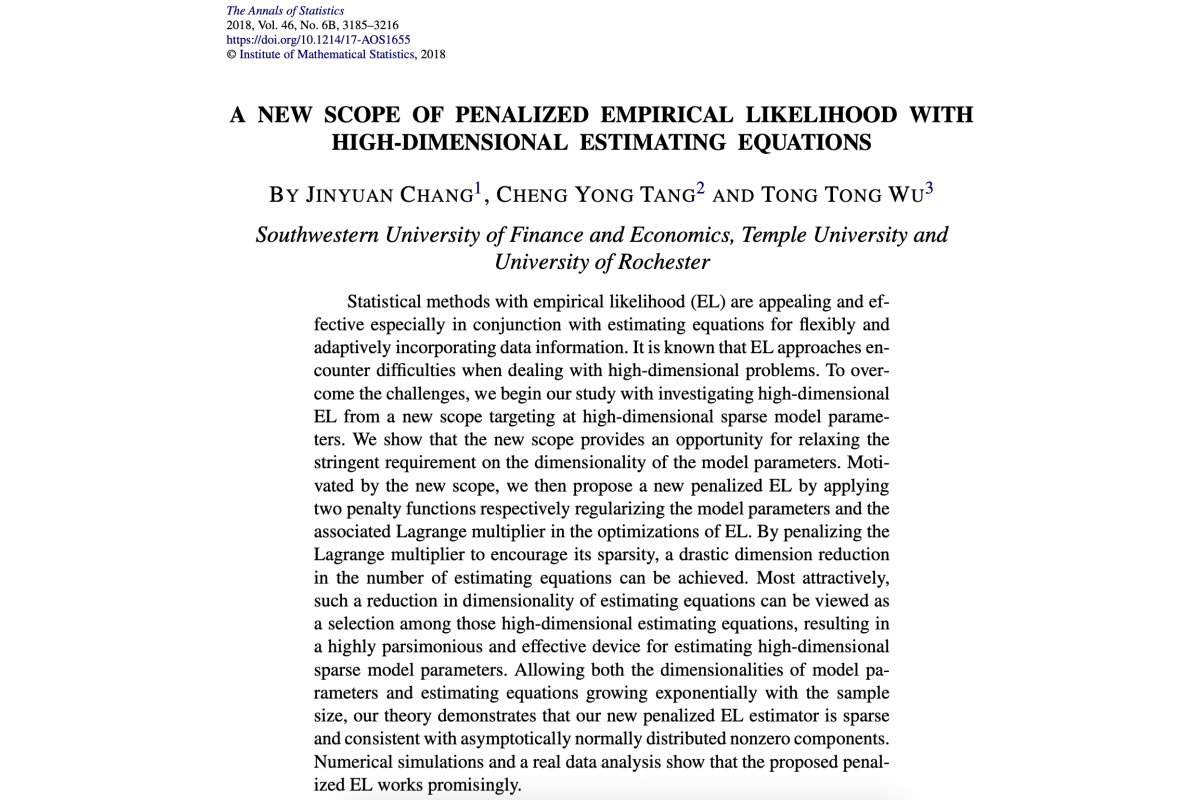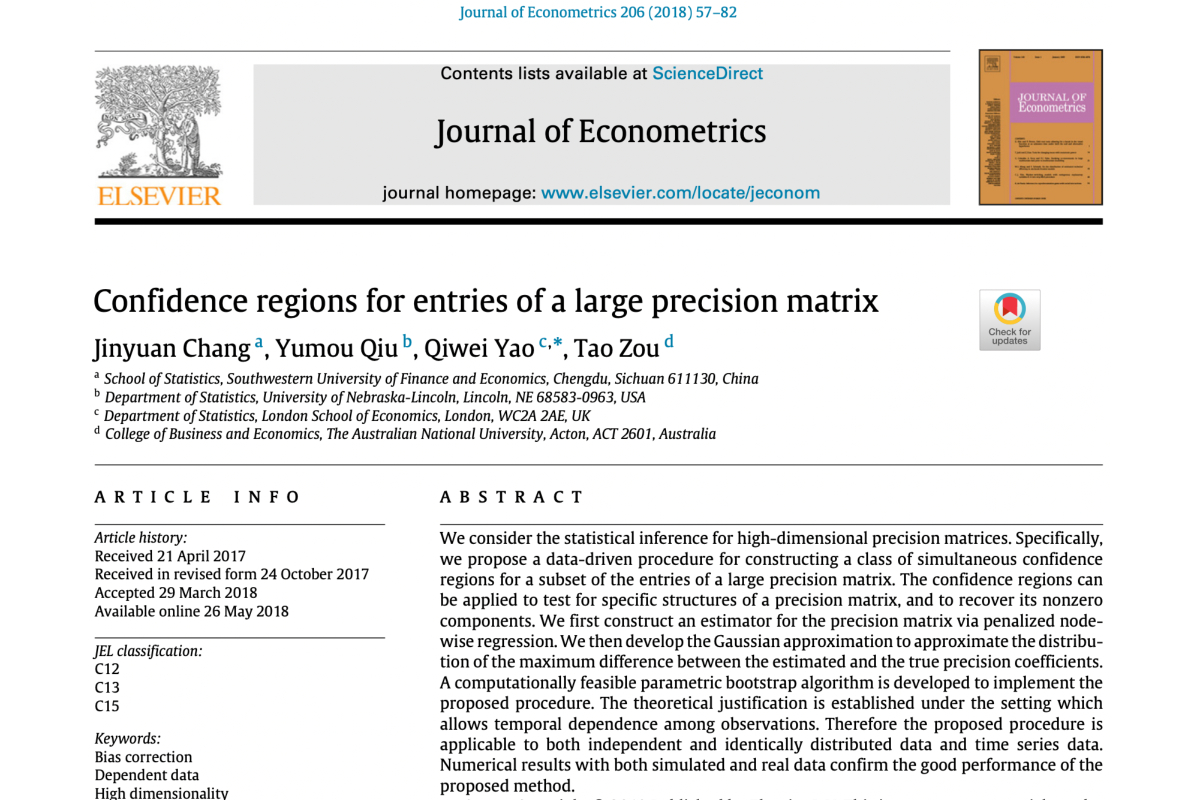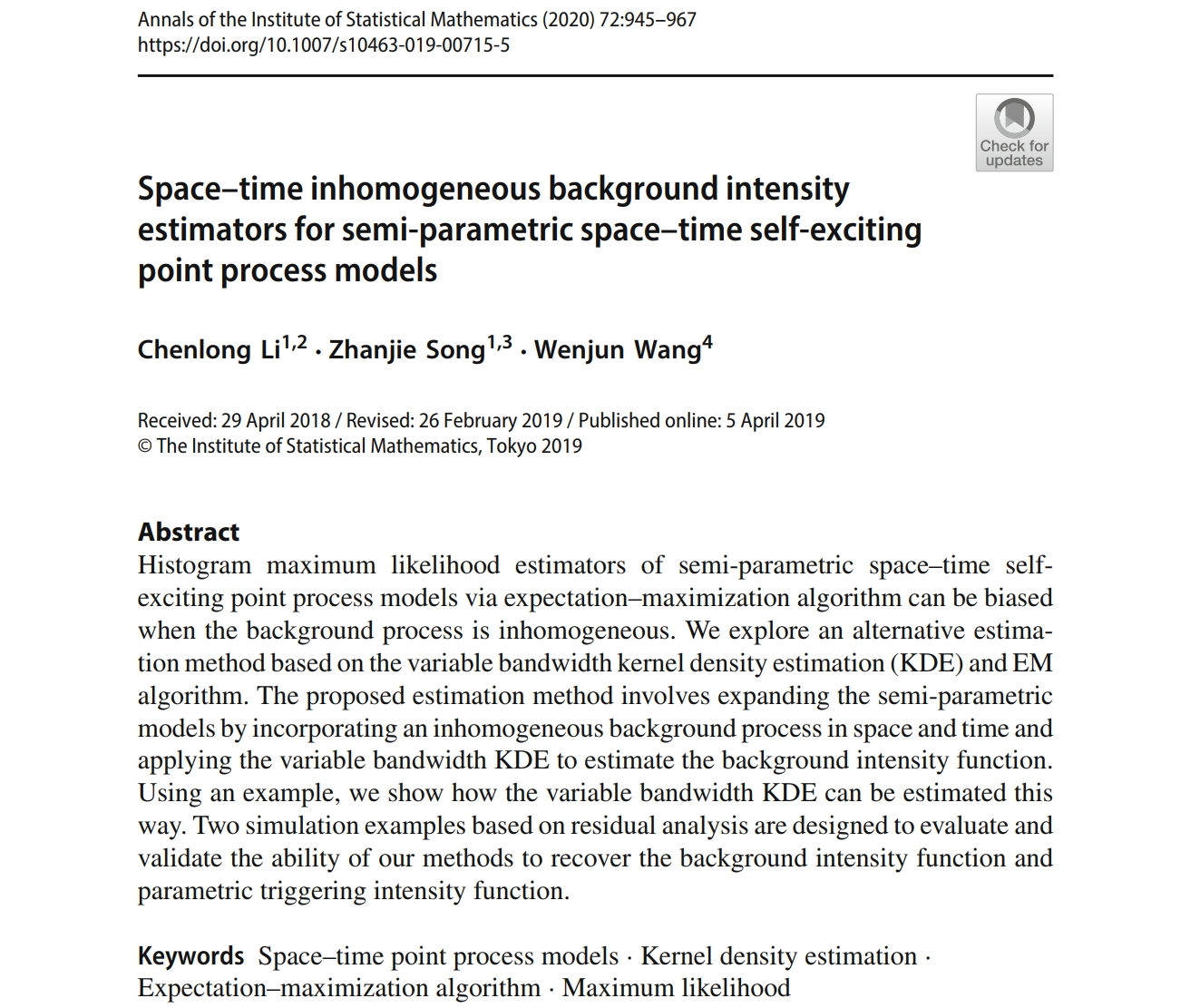
Li, C., Song, Z., & Wang, W. (2020). Space-time inhomogeneous background intensity estimators for semi-parametric space-time self-exciting point process models. Annals of the Institute of Statistical Mathematics, 72, 945-967.
Histogram maximum likelihood estimators of semi-parametric space–time selfexciting point process models via expectation–maximization algorithm can be biased when the background process is inhomogeneous. We explore an alternative estimation method based on the variable bandwidth kernel density estimation (KDE) and EM algorithm. The proposed estimation method involves expanding the semi-parametric models by incorporating an inhomogeneous background process in space and time and applying the variable bandwidth KDE to estimate the background intensity function. Using an example, we show how the variable bandwidth KDE can be estimated this way. Two simulation examples based on residual analysis are designed to evaluate and validate the ability of our methods to recover the background intensity function and parametric triggering intensity function.


